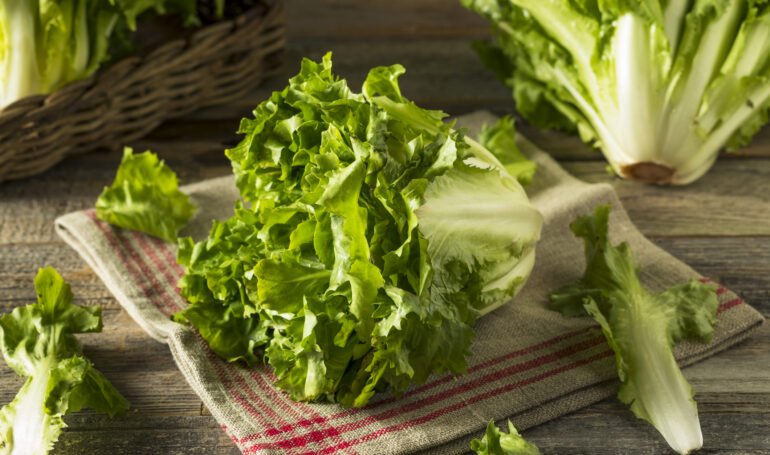
Escarole and Beans
Cucina Povera
Cucina povera, or poor man’s cooking, is a traditional Italian cooking style that utilizes inexpensive yet healthy ingredients. It’s often vegetarian or consists of cheap cuts of meats, as the name implies. In olden times, it was a way of eating out of necessity; now, it has become en-vogue to eat this way, and there is no shame.
I’ve mentioned several times that my dad was a greengrocer while I was growing up in Italy. That meant that as a family, we often ate many vegetarian-based dishes. What didn’t get sold by the end of the day frequently became dinner! We didn’t realize that out of necessity and to prevent waste, we ate healthier than our current diet. One of our favorite meals was the peasant dish of escarole and beans. This dish was often served as a side dish to perhaps some chicken, a frittata, or fresh sheep’s milk ricotta.
What is Escarole?
Escarole is a variety of lettuce with leatherier leaves than other greens. It has an elongated and slightly curled shape, usually dark green in color, but can also have reddish or yellowish shades. Originally from the Mediterranean, it is often used in the kitchen to prepare salads and hot dishes, such as soups and stews. It can also be enjoyed raw or in a salad. If eating it raw, its crunchy texture and bitter flavor make it ideal for pairing with ingredients with a strong flavor, such as cheese or anchovies. But its bitter flavor becomes less intense after cooking.
Properties of Escarole
Almost entirely free of fats and proteins, escarole is rich in water, mineral salts, fiber, and vitamins. It helps the digestive system function and counteracts the formation of cholesterol in the blood. Very rich in calcium and iron, this unique green contains vitamins A, C, and K. Like all green leafy vegetables, it is also a source of magnesium and folic acid, helping to increase energy metabolism by counteracting tiredness and fatigue.
Escarole Varieties
Smooth Escarole
Smooth escarole’s leaves are fleshy and wide, and its texture is crunchy. It is more commonly found in supermarkets. The flavor of smooth escarole is rather delicate compared to curly one.
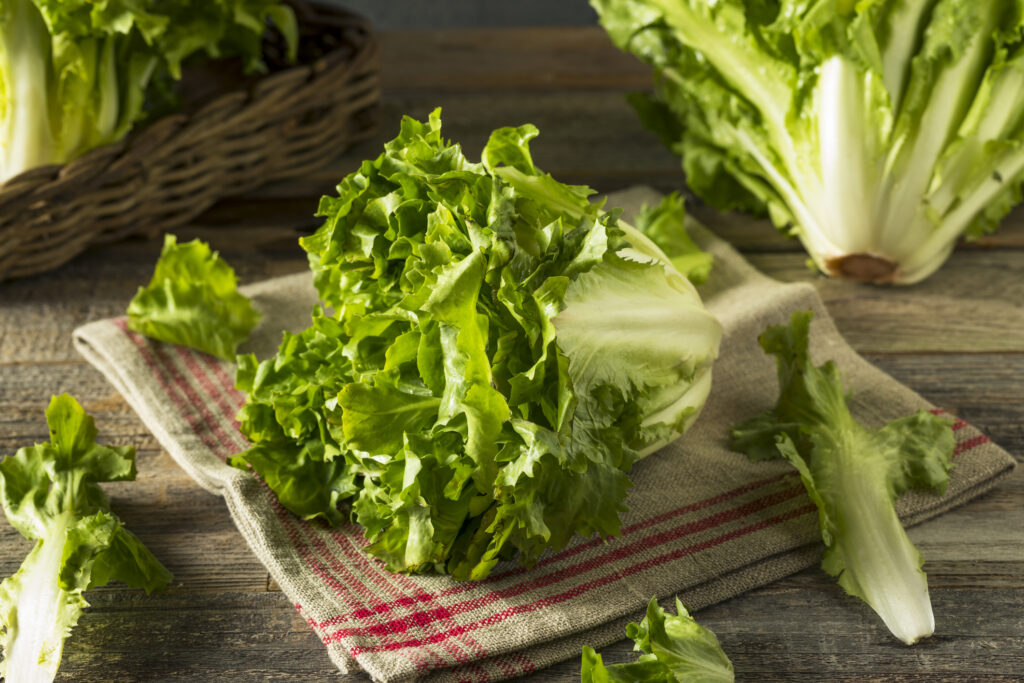
Photo Credit: Phofack2.
Curly Escarole
The leaves of curly escarole are, well, curly, broad, and irregular. It has a crunchy texture, and the flavor is unmistakably more bitter and pungent. You can also enjoy the curly variety raw in rich salads, but only if you love bitter flavors.
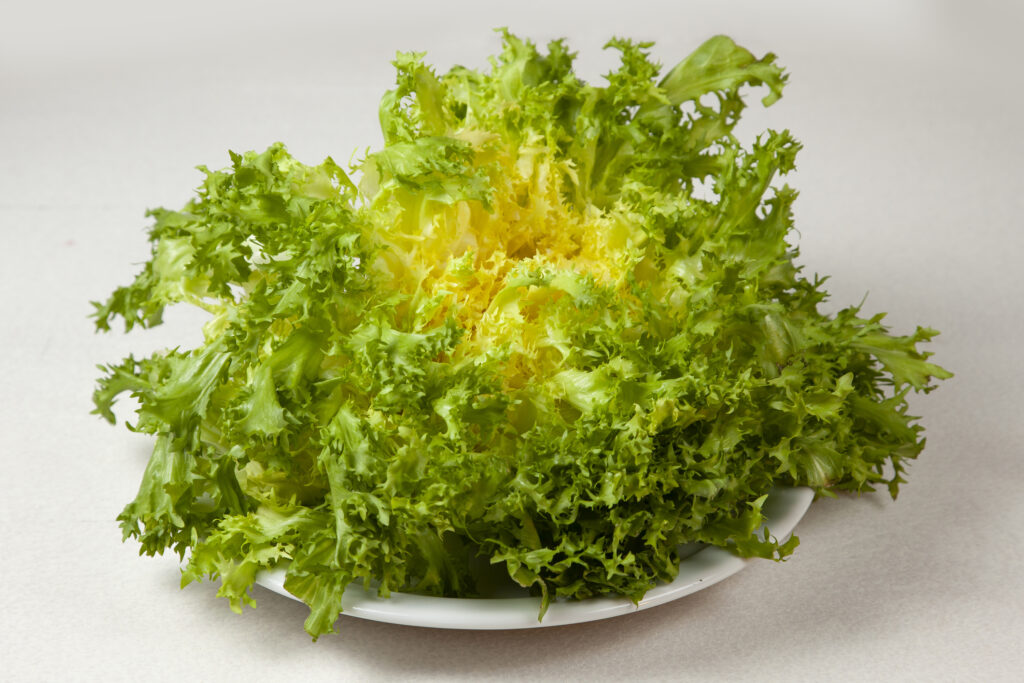
Photo Credit: Tizzi-Col.
Cleaning Escarole
While I love escarole prepared in any way, one of my least favorite activities is washing it. It grows on the ground, so it’s undoubtedly very sandy and dirty. It tends to wilt quickly, so use it within a day or two of purchasing it.
To clean the escarole, take the head, turn it upside down, and cut the core at the base. At this point, remove the outer leaves that are too hard or damaged. Remove all the leaves individually (as you do for salad) and wash them carefully under running water. If they are too large, you can cut them in half. I use tepid water. It removes the dirt better than cold water. After it’s been washed, dice the leaves into about 1-inch pieces, again, like you would romaine lettuce.
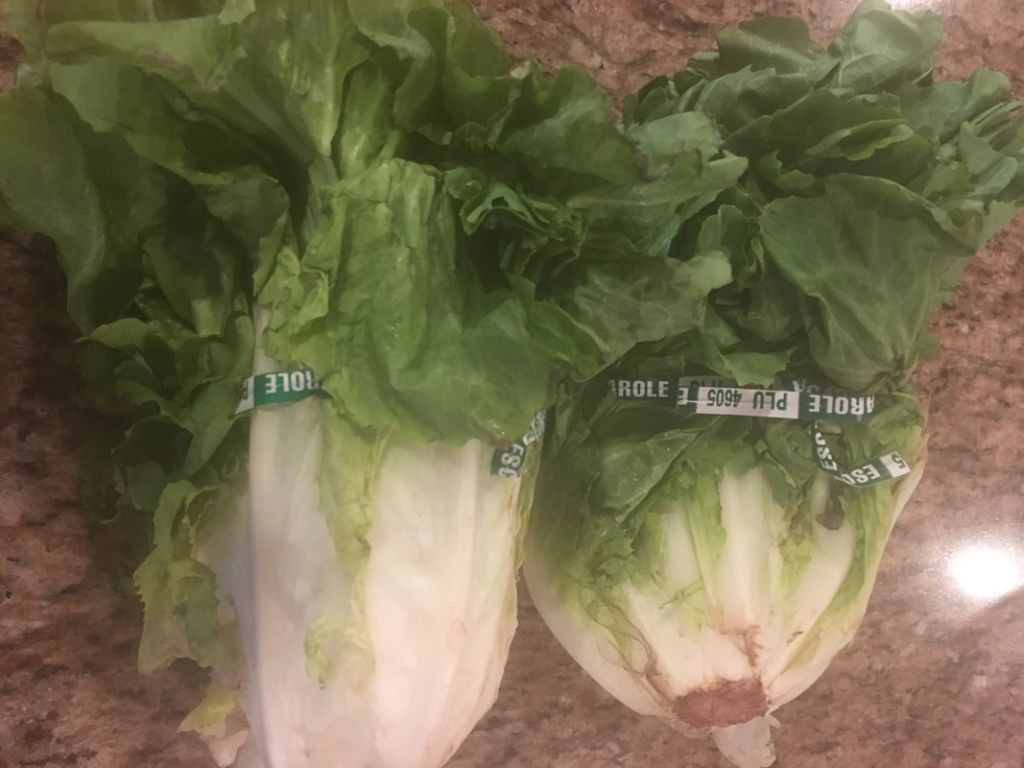
Photo Credit: Lazy Italian Culinary Adventures.
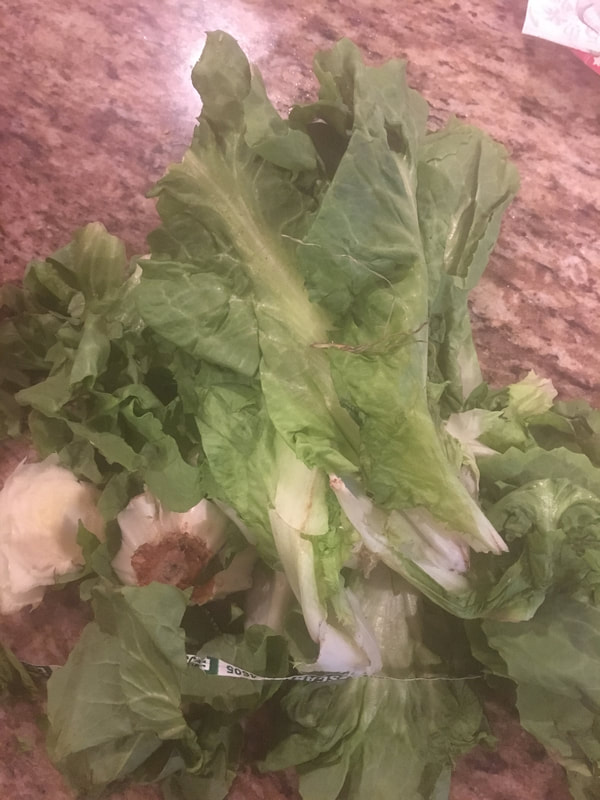
Photo Credit: Lazy Italian Culinary Adventures.

Photo Credit: Lazy Italian Culinary Adventures.
Escarole and Beans
To prepare escarole and beans, you need just a few essential ingredients: the dish’s stars are the obvious escarole and beans. Adding an excellent extra virgin olive oil, some garlic, and some hot chili flakes (if desired) are the rest of the needed ingredients. The escarole and beans will sauté in the oil, and the beans get creamy as they cook. I will say that this is my method of preparing this dish; some folks prepare it differently, such as they don’t pre-boil the escarole but rather cook it directly with the beans. I find the step of pre-boiling it reduces its bitterness almost completely.

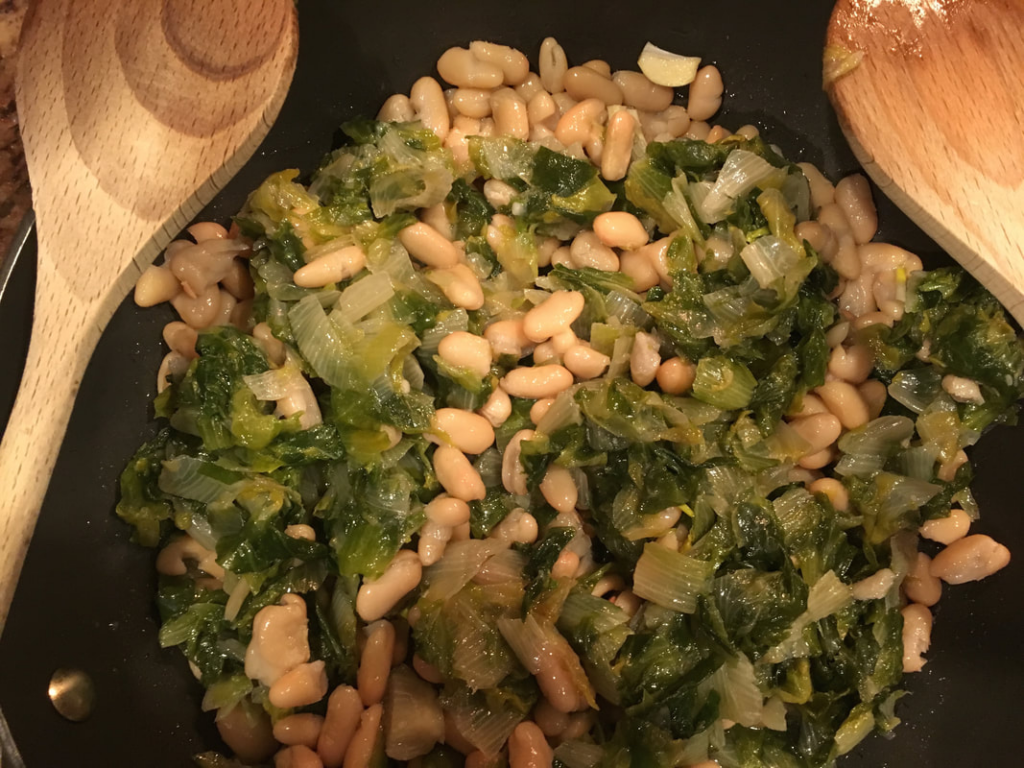
Photo Credit: Lazy Italian Culinary Adventures.
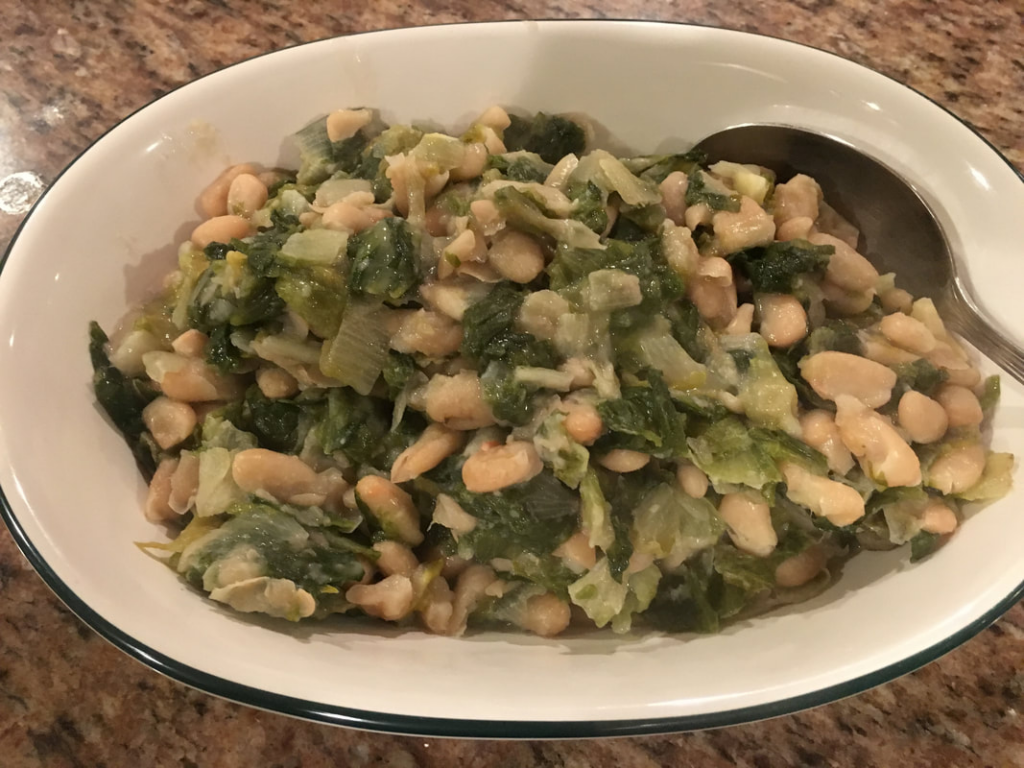
Escarole and Beans
Ingredients
2 large heads of escarole
2 15-oz cans cannellini beans, rinsed and drained
3 large garlic cloves, cut in large pieces for removal before serving
3 – 4 tablespoons extra virgin olive oil (approx.)
Salt – to taste
Hot pepper flakes – to taste
Instructions
- Cut and wash the escarole. Boil it for about 7 – 10 minutes in a large pot of salted water. Remove from the heat. Drain it and set aside.
- Add the beans, escarole, garlic, oil, salt, and pepper in a large skillet.
- Turn the heat to medium and cook all the ingredients over medium heat for about 5 minutes, mixing gently with two wooden spoons. The beans will break down a bit and turn creamy. If the ingredients are drying up too quickly, lower the heat and add 1 – 2 tablespoons of additional olive oil.
- Remove from heat, remove the garlic, and season with additional salt and hot pepper flakes as desired. Plate and serve with crusty Italian bread.
Leave a Reply

What to Pack for Italy
Cosa Mettere in Valigia per l'Italia
Everyone is always asking me what they should pack for Italy,
so I’ve created a quick reference guide that you can use for your next trip.
Hint: You don’t need nearly as much as you think you do!

7 Comments
Hi Judi, did you remove the outer leaves, those are the most bitter ones. If the garlic was overcooked, that could add to the bitterness too.
My mother-in-law often made this but they used Romano beans and cut up boiled potatoes. I find the potatoes created volume in the fish to have more available servings. A very delicious vegetarian dish
Yes, I make those as well. Delicious with fresh Romano beans in the summer.
YUM
I love escarole, but in the wily Great North Woods (as northern NH is called) it is not available. Can I substitute kale, turnips greens, or something I’m more likely to find in old hometown New England?
Hi Thom, you can definitely substitute any of these. Kale and collards work just as well, I would just cook them a few minutes longer as they are a bit tougher than escarole.
Hi, I substitute escarole with romaine lettuce, and it cooks quicker and no need to boil it, wash it and the water that stays in the leaves will cook it.. if needed add 1/4 cup of water… I make a stuffed romaine lettuce with bread crumb, cheese garlic salt, pepper and a little olive oil, as if you were making stuffed artichoke without the work to eat it,,but stuff each layer of cut up romaine with the bread crumb etc cover and let it steam in med/low heat..checking to make sure it does not burn…I think you will like it..